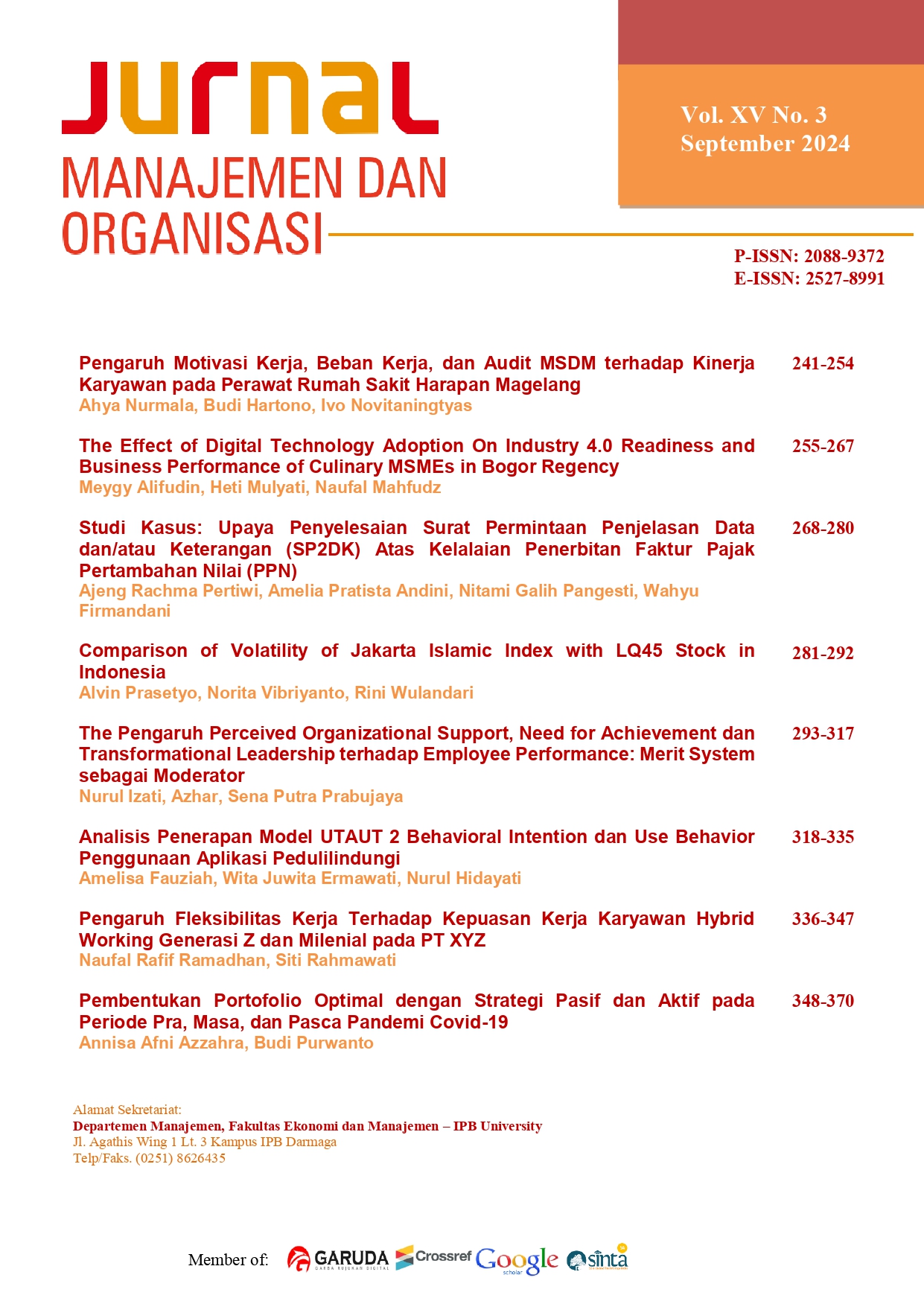Pengaruh Fleksibilitas Kerja Terhadap Kepuasan Kerja Karyawan Hybrid Working Generasi Z dan Milenial pada PT XYZ
Abstract
Generation Z and Millennials have a major contribution in the availability of human resources in Indonesia's workforce in 2023 according to data from the Central Bureau of Statistics. According to Deloitte in 2022, the hybrid working trend is increasingly popular and preferred by this generation as their working model because it is considered more cost-effective and reduces stress on travel. PT XYZ is required to continue to be an adaptive company in accordance with one of the values in the corporate culture. PT XYZ understands the importance of strategic solutions in responding to this situation to make adaptive innovations to maintain productivity and increase company attractiveness by focusing on employee job satisfaction. Based on research from Knight Frank in 2022, work flexibility is considered an important factor in achieving these goals. This study aims to analyze the perceptions of PT XYZ employees about work flexibility and job satisfaction, and analyze the effect of work flexibility on job satisfaction. This research uses descriptive analysis method with Microsoft Excel and simple linear regression analysis with SPSS. The results stated that employees have a good perception of work flexibility and job satisfaction at PT XYZ. The results also state that work flexibility has a positive and significant effect on job satisfaction by 17.5 percent. It can be concluded that the level of job satisfaction will increase if employees get better work flexibility.


.jpg)




